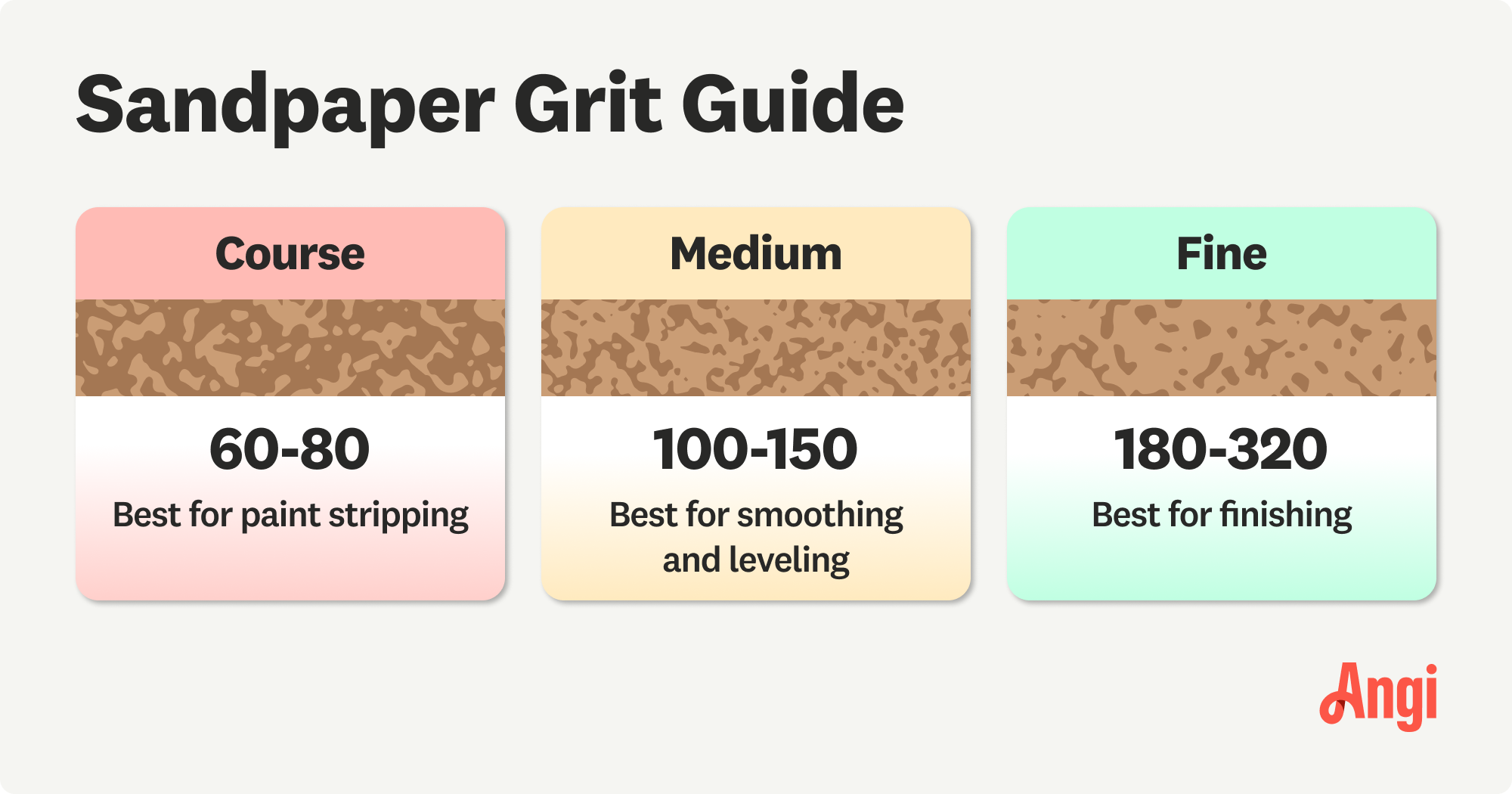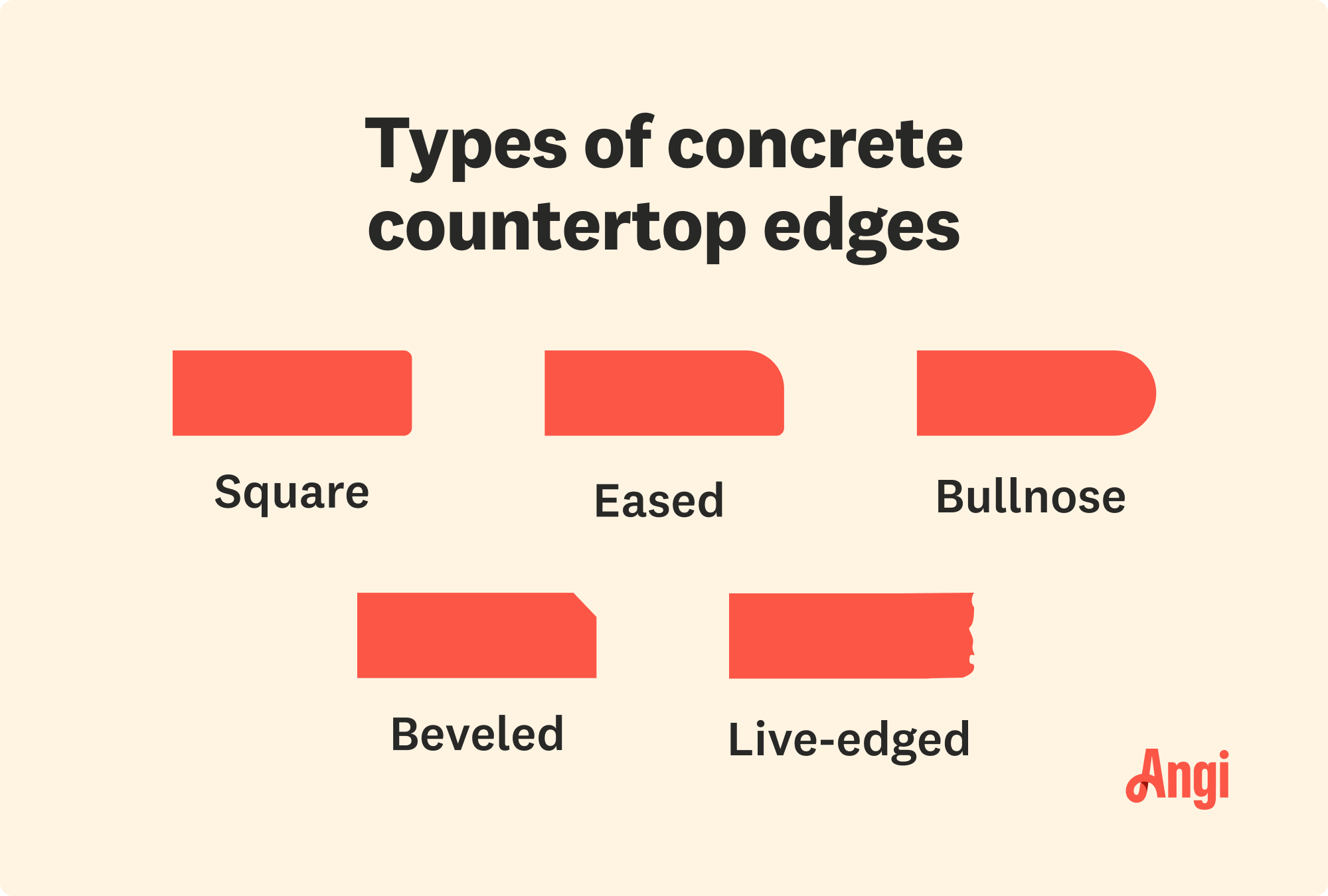
Countertop repair costs may be the deciding factor between replacing or repairing your counter. Let’s break down the cost to repair, resurface, or relaminate.
Cement your place as a DIY expert with this ambitious project


Learning how to make concrete countertops isn’t a project for DIY rookies—it’s a multi-step, messy, and meticulous process. But with a lot of patience, planning, and the right techniques, you can create sleek countertops that are the perfect pick for a contemporary kitchen.

To hold that sloppy concrete mix, you need to create a mold.
Carefully measure your existing countertops or determine what size you want if it’s a new layout.
Cut out sheets of inexpensive, non-stick melamine-coated particle board to match the desired base size and thickness of the sides using a circular saw.
Don’t forget to add 3/4-inch to account for overhang.
Set the base sheet between a pair of sawhorses and clamp the side strips onto the base before screwing them in place at 12-inch intervals.
Insert the screws from the outside to make it easy to remove them.
Create a recess in the mold to fit your sink, cooktop, or other inlaid fixtures. Use a piece of foam cut to size to create a sink mold. It should be higher than the melamine sides so you don’t pour concrete over it. Do a dry fit to make sure it’s the right size, and seal it in place with caulk.
Apply silicone caulk around the mold’s joints, smoothing it with a wet finger as you work. Applying silicone spray once the caulk dries helps the countertop to slide out of the mold more smoothly once cured.
Reinforcing the sides will hold the mold tightly in place when you pour the heavy concrete.
Lay several 2x4s underneath the length of the mold, ensuring you have at least an inch of overhang at all edges. Attach 2x4s on all four sides around the mold on top of the overhangs using 2-inch screws.
Avoid drilling the screws into the mold itself.
Placing galvanized structural steel mesh in the concrete mix provides additional reinforcement and reduces the risk of the cement cracking. Cut the mesh to fit with wire cutters, leaving around 1 inch free from mesh around the mold edges. Hold off adding it to the mold until you’re pouring the concrete.

Mix the concrete according to the manufacturer’s instructions while wearing a protective face mask, goggles, and gloves. This can take some elbow grease if you don’t have a concrete mixer and are relying on a wheelbarrow and shovel or a 5-gallon bucket and a drill with a paddle bit. Don't add too much water—aim for a consistency similar to peanut butter.
For a unique concrete countertop, add a pigment to the mix to create a customized color.
Scoop or pour the concrete into the mold, pressing the mix into the edges and corners with a trowel to help prevent air bubbles from forming. Once the mix reaches about halfway up the sides of the molds, place the steel mesh on top of the mixture—don’t let it touch the sides—and add more concrete on top.
Once the mold is full, use a straight piece of lumber or trowel to screed the surface with a back-and-forth motion. As this levels the concrete, you may need to add more concrete mix and repeat the process until the mold is full and level.
Air bubbles in the concrete look unsightly and can lead to cracking. To bring them to the surface before the concrete cures, gently tap a rubber mallet along the sides of the mold. No mallet? Running a sandpaper-free orbital sander along the mold edges generates air bubble-releasing vibrations. Run a cement float or hand trowel across the surface to release any lingering air bubbles and then again, as the concrete is hardening slightly, to smooth the surface.
Cover the countertop with a plastic sheet or a damp burlap cloth to protect it from falling debris and lock in moisture. You want the surface to cure slowly over at least four days to one week.
Once the concrete has cured fully, carefully remove the mold screws and gently tap a putty knife into the corners of the mold with the rubber mallet to pry the sides loose.
Rope in some helpers to allow you to lift the heavy concrete slab off the base panel and flip it over before resting it face-up on your pair of sawhorses.

Sand your concrete countertop sides and top using an orbital sander and 80-grit sandpaper while wearing a protective face mask. If any cracks or air bubbles appear, use a concrete patching compound to perform spot repairs and allow the patches to dry completely. Wipe down and then sand again with the 80-grit sandpaper, followed by 120-grit sandpaper and then 220-grit sandpaper. Gradually increasing the grit will leave you with a smooth, polished surface.
Before sealing the concrete countertops, vacuum the surfaces and wipe them down with a wet cloth. Wait for it to dry, then apply two or three coats of a food-safe concrete sealer. A dry, clean surface helps prevent unsightly staining.

If you’re a handy homeowner with a wide range of tools and the confidence to tackle precision projects, then learning how to make concrete countertops could be worth it. The average professional cost to install concrete countertops is $1,500 to $6,000, and you could save 50% to 90% by doing it yourself.
However, it’s a complex, time-consuming, multi-step process, and concrete slabs are heavy and awkward to lift. Getting any steps wrong can compromise your concrete, ruining the aesthetic, reducing the surface's durability, or rendering it unusable. Hiring a countertop contractor near you or learning how to install simpler laminate countertops can save a lot of time and stress.
From average costs to expert advice, get all the answers you need to get your job done.

Countertop repair costs may be the deciding factor between replacing or repairing your counter. Let’s break down the cost to repair, resurface, or relaminate.

Explore how much concrete countertops cost to install based on factors like their size, thickness, location, finish, and labor rates.

Butcher block countertops are a popular and durable choice for active kitchens. Learn how much it costs to install butcher block counters and what factors may affect pricing.

Laminate countertops are affordable and easy to maintain, but not as durable as other materials. Here’s a breakdown of laminate countertop pros and cons.

If you’re changing up your kitchen decor, you may want to paint Corian® countertops to match rather than installing brand-new countertops.

Though concrete is durable, it does have some issues. You can combat these common problems with concrete countertops if you know what to look for.